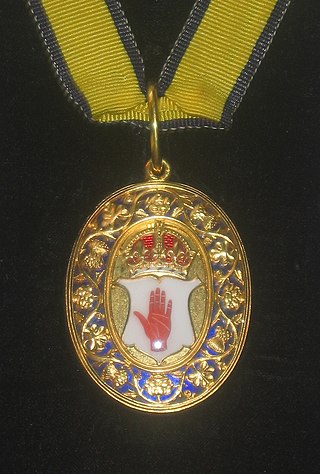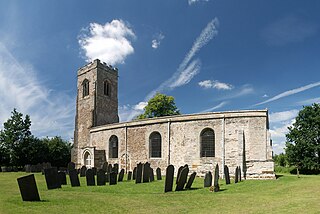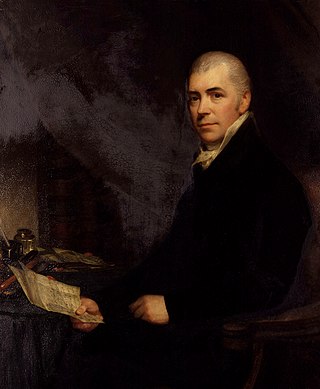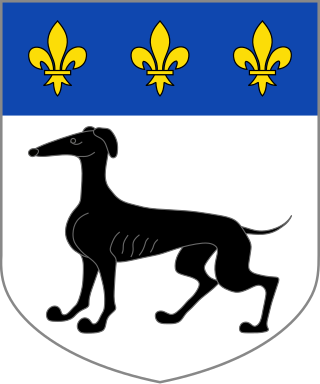
A baronet or the female equivalent, a baronetess, is the holder of a baronetcy, a hereditary title awarded by the British Crown. The title of baronet is mentioned as early as the 14th century; however, in its current usage it was created by James I of England in 1611 as a means of raising funds for the crown.

Thomas Francis Fremantle, 3rd Baron Cottesloe, 4th Baron Fremantle was a British peer and sportsman who competed in the shooting event at the 1908 Summer Olympics.
There have been three baronetcies created for members of the Anstruther family, two in the Baronetage of Nova Scotia and one in the Baronetage of Great Britain. Two of the creations are extant while one is extinct.
There have been six baronetcies created for persons with the surname Brooke, one in the Baronetage of England, one in the Baronetage of Ireland and four in the Baronetage of the United Kingdom. As of 2015 four of the creations are extant, though one has been subsumed into a peerage.

Wistow is a deserted medieval village and civil parish in the Harborough district, in the English county of Leicestershire, and lies seven miles south-east of the city of Leicester in the valley of the River Sence. Since 1 April 1936 it has included most of the former civil parish of Newton Harcourt which was a chapelry of Wistow. The population of the civil parish at the 2011 census was 256.
There have been four baronetcies created for people with the surname Parsons, two in the Baronetage of Ireland, one in the Baronetage of England and one in the Baronetage of the United Kingdom. One creation is still extant as of 2008.
There have been three baronetcies created for members of the Farquhar family, one in the Baronetage of Great Britain and two in the Baronetage of the United Kingdom. One creation is extant as of 2008.
There have been five baronetcies created for members of Clan Ramsay, four in the Baronetage of Nova Scotia and one in the Baronetage of the United Kingdom. The baronetcy in the Baronetage of the United Kingdom is extant as of 2023.
There have been six baronetcies created for members of the Corbet family, four in the Baronetage of England, one in the Baronetage of Great Britain and one in the Baronetage of the United Kingdom. All creations are extinct.

There have been six baronetcies created for persons with the surname Shaw, one in the Baronetage of England, one in the Baronetage of Nova Scotia and four in the Baronetage of the United Kingdom. Two of the creations are extant as of 2023.

Sir Henry Halford, 1st Baronet, GCH, born Henry Vaughan, was president of the Royal College of Physicians for 24 years. As the royal and society physician, he was physician extraordinary to King George III from 1793 to 1820, then as physician in ordinary to his three successors – George IV, William IV and the young Victoria. He also served other members of the Royal Family until his death.
Albert Pell was an English solicitor and Conservative Party politician.
Sir Henry Halford, 2nd Baronet was an English Tory and later Conservative politician who sat in the House of Commons from 1832 to 1857.
Henry Halford (1766–1844) was a physician and 1st Baronet Halford of Wistow.

Wistow Hall is a 17th-century country house in Wistow, Leicestershire, England which has been converted into an apartment building. It is Grade II* listed.
Sir Henry St John Halford, 3rd Baronet was an English landowner and expert rifleman.

The Halford baronetcy of Wistow, Leicestershire, was created in 1641 for Richard Halford in the Baronetage of England. It became extinct in 1780 with the death of the seventh and last baronet.

The Halford baronetcy of Welham, Leicestershire was created on 27 June 1706 in the Baronetage of England, for William Halford. He was the son of Sir William Holford and his wife Elizabeth Pretyman, daughter of Sir John Pretyman, 1st Baronet, knighted in 1683; he married firstly by 1692 in Frances Cecil, daughter of James Cecil, 3rd Earl of Salisbury.

The Halford baronetcy of Wistow, Leicestershire was created on 27 September 1809 in the Baronetage of the United Kingdom for Henry Halford, a prominent society physician who was physician extraordinary to the George III from 1793. Descended maternally from the 5th Baronet of the first creation, born Henry Vaughan, he changed his surname to Halford by Act of Parliament in expectation of inheriting Wistow Hall. The baronetcy became extinct with the death of his grandson, the fourth baronet, in 1897.